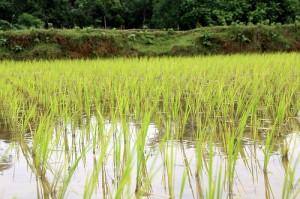What an clever rule of thumb!
Domestication, then, seems to be associated with changes in transcriptional regulatory networks, whereas crop diversification involves a larger proportion of enzyme-encoding loci.
In other words, when it comes to transforming a wild plant species into one that is adapted to being grown by humans for food, in other words, changing the shape or function of the plant itself, you’ll usually want to mess around with the regulation of transcription factors (the genes that regulate how other genes are expressed), but when it comes to selecting for the qualities of the food itself (for example: different tastes, colors, smells, or nutritional values) it makes more sense to mess around with the genes that are directly involved in changing one kind of molecule into another. I wonder how generalizable that is?
Some examples from the paper:
- Having seeds stick to the plant so they’re easier to harvest? Transcription factors <– To understand how important a trait this is, imagine trying to harvest a field full of ripe dandelion flowers… one good breeze and your whole crop is lost.
- Growing as a single stalk? Transcription factors
- Seeds that are no longer encased in hard protective cases? Transcription factors
- Sticky rice and sticky varieties of other grains? Biochemistry genes (Enzymes)
- Yellow corn*? Biochemistry genes (Enzymes)
Reading reviews like this one make me remember why it was the genetics of domestication that got me hooked on plant genetics in the first. Even if I have to go through a few intellectual contortions to tie my own research back into this field.
And completely unrelated to the subject of this post, I just want to say thank you to everyone who commented on my last entry. Has it been more than a month already?.
*Also golden rice, but that’s the result of a much more conscious form of selection.
Michael D. Purugganan and Dorian Q. Fuller, “The nature of selection during plant domestication,” Nature 457, no. 7231 (February 12, 2009): 843-848. doi: 10.1038/nature07895
